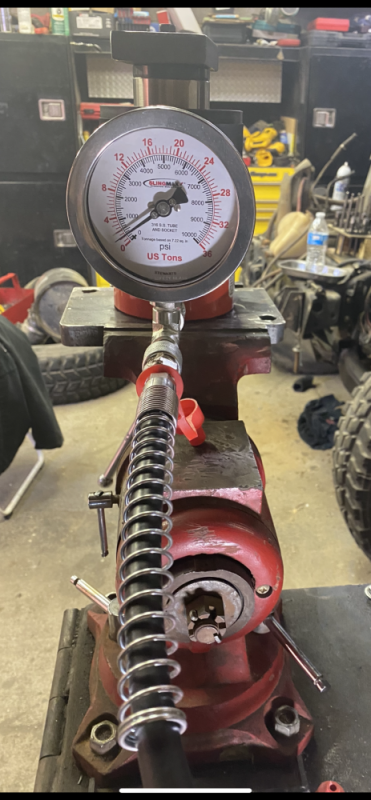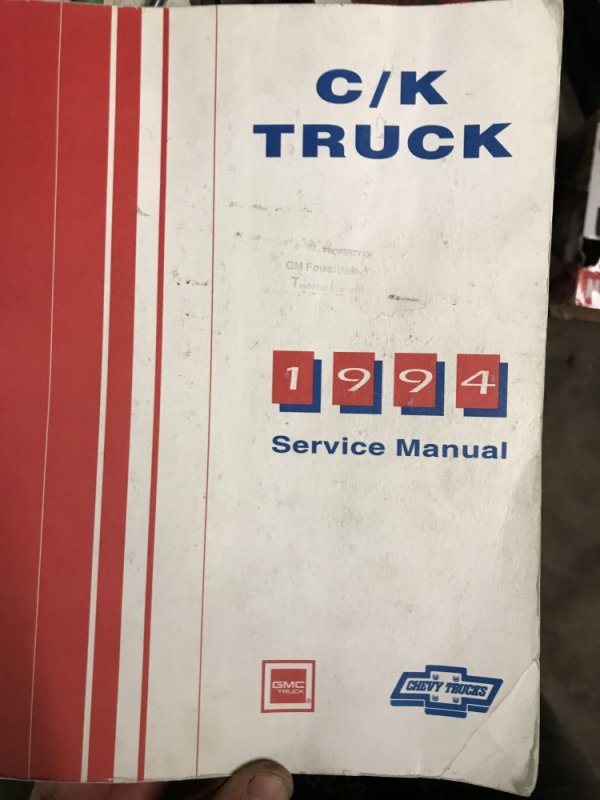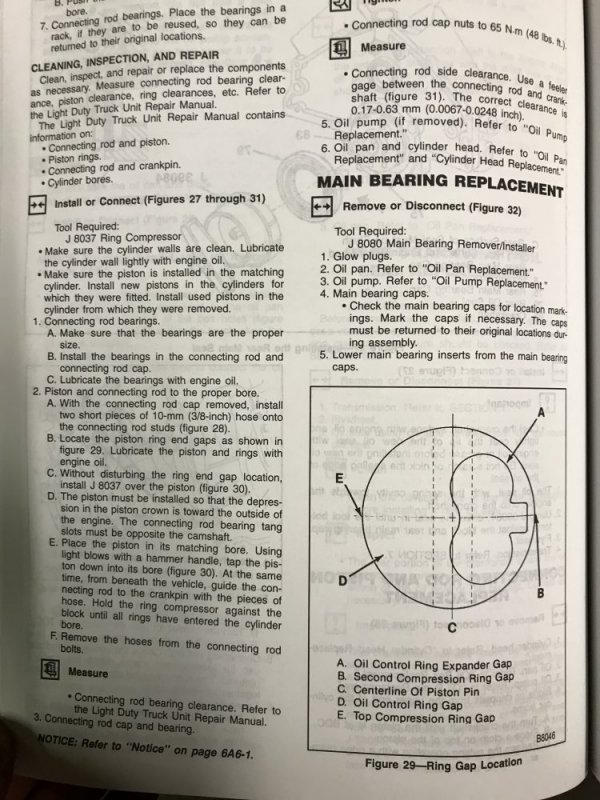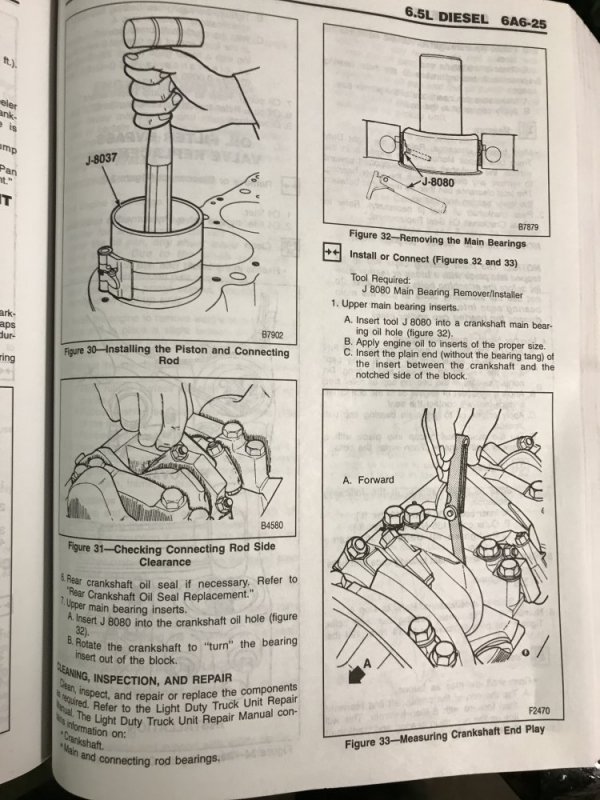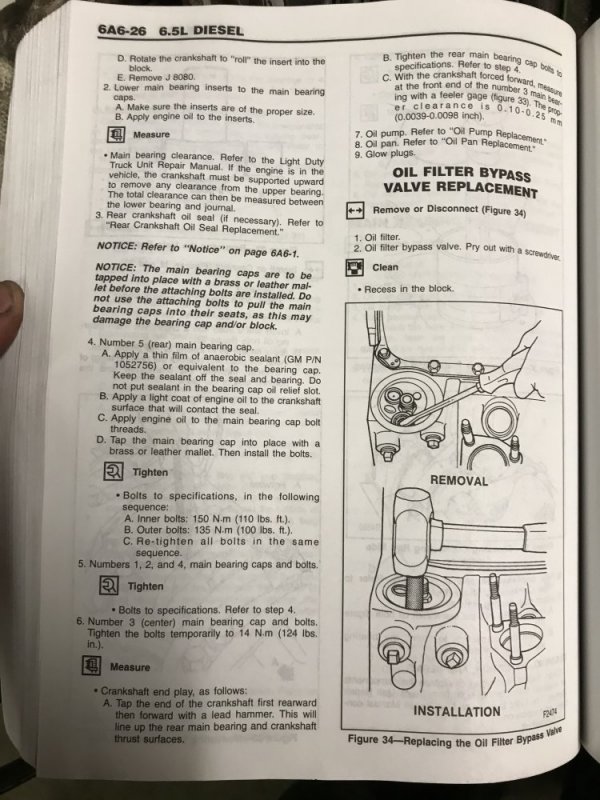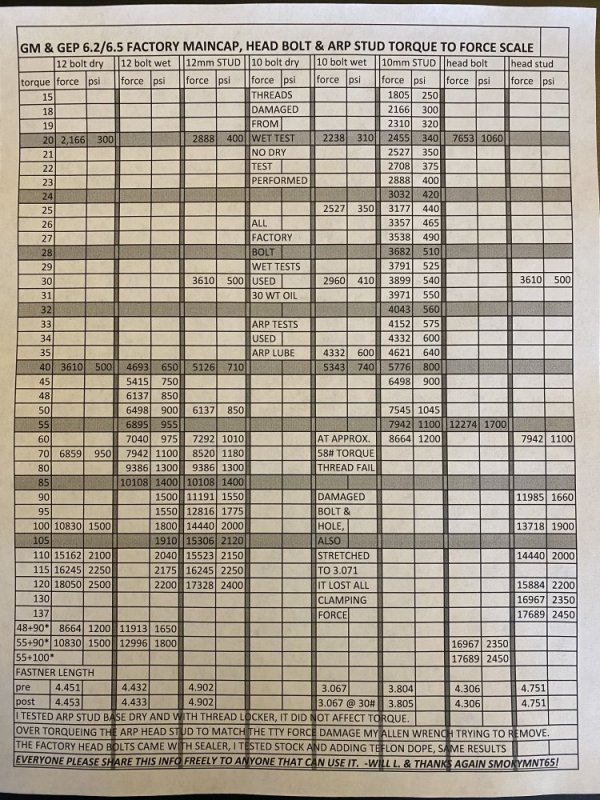Will L.
Well-Known Member
Thank you.
Amazing to me that there is different torque specs from different sources. It shouldn’t be however- like I noticed your manual has a different temperature range allowed from other 6.5 manuals. It’s like fox vs cnn vs cbs- WE think its THIS. Haha.
If anyone else has a different manual showing different specs, please let me know. I want to cover as many bases as I can before starting incase there is some other method or spec shown to try to put them in the chart.
Something that has become clear is all head bolts, main cap bolts, and rod bolts should only be used 1 time. There are manuals that said things like apply new sealant to reuse, but later they learned they fail. So they should always be replaced if using the factory bolts. I have (in the fleet) re used them and had it be ok. I’ve also had engines later get the main web cracks and those had reused main bolts because that was recomend back then- hind site tells me that could have been a major contributor.
Not the target on this thread, but want to point out- @Twisted Steel Performance- YES 100% the rod bolts also should be replaced as 1 time use. Same thing, Inhave reused them and got away with it- but if anyone thinks I am going to reuse rod bolts on this engine build? HAHAHA. Go buy some more funny stuff to smoke.
IF A BUDGET DOESNT ALLOW- you do what you have to do. But you better put some red locktite in your budget and consider dimpling or safety wire where possible. Like dimple the rod fastners and drill and safety wire main caps. Yes it is more time, but if you haven’t enough money you better put in time.
Amazing to me that there is different torque specs from different sources. It shouldn’t be however- like I noticed your manual has a different temperature range allowed from other 6.5 manuals. It’s like fox vs cnn vs cbs- WE think its THIS. Haha.
If anyone else has a different manual showing different specs, please let me know. I want to cover as many bases as I can before starting incase there is some other method or spec shown to try to put them in the chart.
Something that has become clear is all head bolts, main cap bolts, and rod bolts should only be used 1 time. There are manuals that said things like apply new sealant to reuse, but later they learned they fail. So they should always be replaced if using the factory bolts. I have (in the fleet) re used them and had it be ok. I’ve also had engines later get the main web cracks and those had reused main bolts because that was recomend back then- hind site tells me that could have been a major contributor.
Not the target on this thread, but want to point out- @Twisted Steel Performance- YES 100% the rod bolts also should be replaced as 1 time use. Same thing, Inhave reused them and got away with it- but if anyone thinks I am going to reuse rod bolts on this engine build? HAHAHA. Go buy some more funny stuff to smoke.
IF A BUDGET DOESNT ALLOW- you do what you have to do. But you better put some red locktite in your budget and consider dimpling or safety wire where possible. Like dimple the rod fastners and drill and safety wire main caps. Yes it is more time, but if you haven’t enough money you better put in time.
Last edited:

